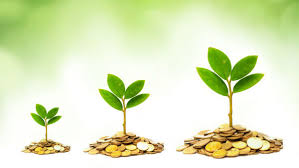 Those who have never experienced Ramadan in the Middle East, specifically in Saudi Arabia (KSA) and United Arab Emirates (UAE), might expect food eating and food category sales to go down during the holy month of fasting as people fast for 15-16 hours a day. However, food consumption for most categories actually surges during this month compared to other months.
Those who have never experienced Ramadan in the Middle East, specifically in Saudi Arabia (KSA) and United Arab Emirates (UAE), might expect food eating and food category sales to go down during the holy month of fasting as people fast for 15-16 hours a day. However, food consumption for most categories actually surges during this month compared to other months.
What’s driving this rise in consumption? While the majority of the consumers might fast the whole day spending time in spiritual reflection, families and friends often come together for Iftar, breaking the fast at dusk—typically with dates. The build up to Iftar is marked by women in the house spending quality time cooking traditional meals, which augments the demand for certain food and beverage categories. On the trade front, marketers respond to increased consumption habits with a range of Ramadan-centric marketing communications.
DECODING THE ESSENTIALS
Given the importance of food to Ramadan, some food categories show accelerated growth during this period compared to non-food categories. In fact, sales in KSA and UAE increase approximately 10% from non-Ramadan periods. Compared to the growth in food categories, majority non-food categories show a very stable behavior in terms of sales during this period. Within the food basket, we observe packaged foods driving this growth across both markets. Categories like powdered beverages, concentrated juices/cordials, dates, bouillons, soups, oats, milk powder, condensed milk and dry-desserts exhibit exceptional growth on account of increased consumption during the holy month.
The surge in the popular categories can be attributed to quintessential brands that have strong ties to Ramadan. For example, Vimto in cordials (concentrated beverage), Tang in powdered beverages, Maggi in bouillons and soups and Nido in milk powder have high sales during the holy month. Interestingly, Ramadan accounts for three-fourths of the estimated Vimto sales and almost 50% of Tang’s and Quaker Oats’ estimated sales. Gifting chocolate brands, such as Galaxy Jewels, Mackintosh’s Quality Street and Ferrero Rocher, also see a surge as consumers purchase premium chocolates as a token of Eid greetings in culmination of the holy month.
GETTING THE PRICE RIGHT
Pricing and promotion very much influence consumer buying behavior during Ramadan. Retailers and manufacturers provide heavy discounting during this period. Qualitative studies indicate that volume-based promotions are the most sought after by consumers in Saudi and UAE, majority of consumers prefer “buy one get one free” sales followed by free gifts or extra volume offers. Promotional offers and festive ambience drive hypermarkets and supermarkets as the preferred locations for Ramadan shopping.
However, to protect consumers against rising prices for popular holiday foods, UAE’s Ministry of Economy has fixed costs for around 3,500 food items for Ramadan to ensure price stability across the country and also conducts inspections to check on prices across supermarkets and department stores. To enhance shoppers’ purchasing potential, many retailers are open for longer durations during this period in both KSA and UAE.
CAPTURING THE ESSENCE OF RAMADAN
To capitalize on the consumption phenomenon, marketers are changing how they advertise their products to better relate to consumers. Manufacturers try to relate and engage the religious sentiment and the holiness of the occasion across their communication platforms.The Ramadan campaigns generally incorporate the crescent moon and traditional lantern “Fanous” symbol along with the tag line “Ramadan Kareem” (i.e. greetings for Ramadan). Ramadan is also considered a month of giving where consumers are inclined to contribute to charities and good causes. Building on this, brands have initiated ad campaigns like Coke’s “Ramadan Acts of Kindness” to capture the spirit of the holy month.
As the consumers are getting increasingly digitally savvy in the region, brands are hitting the digital bandwagon through myriad online marketing activities. Companies like Nestle and Unilever have introduced exclusive Ramadan recipes online, as well as through booklets, to remain top of mind by engaging largely with the female demographic, as cooking takes the center stage during this month.
EXPECTATIONS FOR RAMADAN 2015
Packaged Food categories sales during Ramadan have experienced steady growth year after year. In UAE, food basket sales rose from 6% in 2013 to 9% in2014, while in KSA, the growth in sales during Ramadan has been stable at 10% for food categories over the last two years. However, the growth in Ramadan food categories sales is expected to be sluggish for UAE and KSA in 2015 compared to previous years due to certain macro-economic variables. Low oil prices have reduced consumer confidence, tourism has been slower than usual and UAE’s real estate uncertainty is affecting consumer spending. Certainly, the 2015 Ramadan season will be a more competitive period for food manufacturers, given the sluggishness experienced in the beginning of the year.

